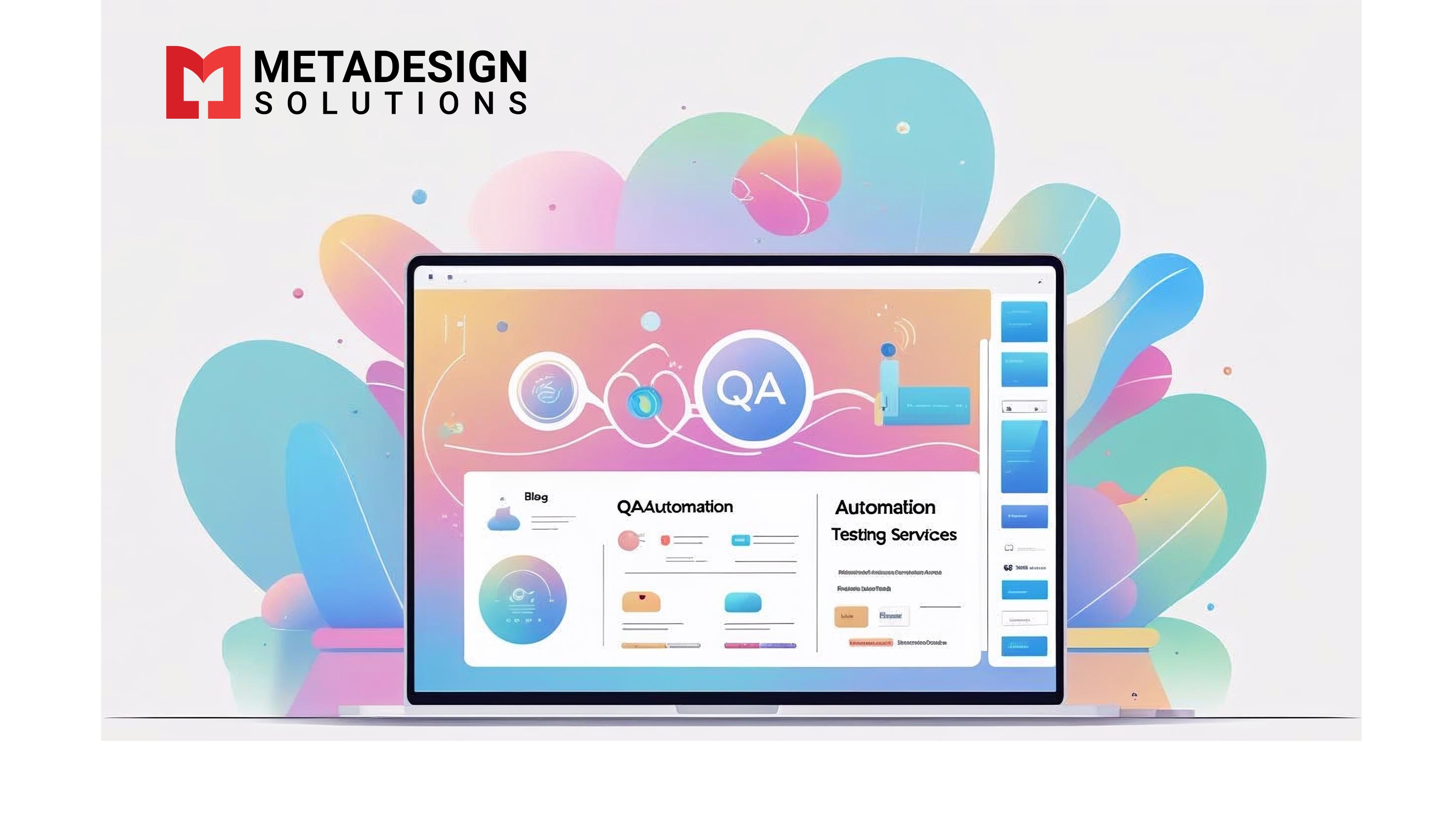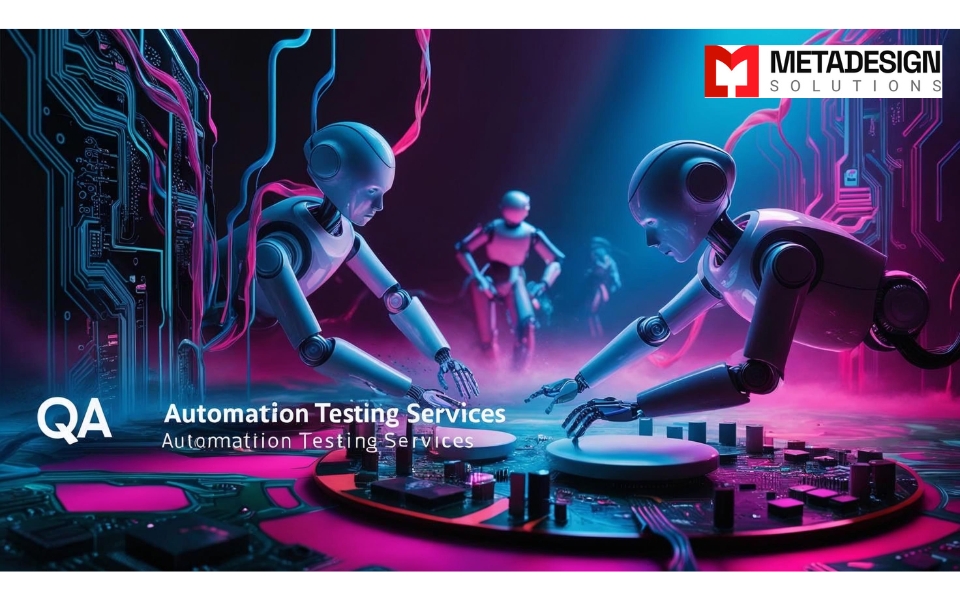Fixing Flaky Tests with AI: A QA Automation Company’s Guide to Smart Debugging (2025)

Strong 8k brings an ultra-HD IPTV experience to your living room and your pocket.
Fixing Flaky Tests with AI: A QA Automation Company’s Guide to Smart Debugging
Introduction
In 2025, the rapid evolution of software demands quality at unprecedented speed. With continuous integration and deployment (CI/CD) cycles shortening, software teams rely more than ever on automated testing to maintain product reliability. Yet, one persistent challenge remains: flaky tests—those unpredictable tests that sometimes pass and sometimes fail without any code changes.
Flaky tests disrupt continuous delivery pipelines, erode developer trust, and threaten the very efficiency automation promises. Enter AI-driven debugging—a game-changer. At MetaDesign Solutions, an industry-leading Software QA Testing And Automation Company, integrating artificial intelligence into QA workflows is revolutionizing the approach to QA Automation Testing Services. This guide unpacks why fixing flaky tests with AI is vital, how it works, and practical steps for companies aiming to deliver robust, stable applications.
What Are Flaky Tests and Why Do They Matter?
The Anatomy of a Flaky Test
A flaky test generates inconsistent results, passing or failing without any changes to the underlying code or environment. Common causes include:
- Dependency on real-time data or asynchronous operations
- Network delays or service instability
- Race conditions in code or test logic
- Timing or environmental issues
- Unreliable third-party APIs or services
The Impact on QA Automation
Flaky tests undermine:
- Continuous Delivery Pipelines: CI/CD deployments halt when tests are unreliable.
- Developer Confidence: Teams waste time rerunning and analyzing failing tests.
- Quality Assurance: Undetected real bugs (masked by flakiness) reach production.
For a QA Automation Company or enterprise with mission-critical systems, not addressing flaky tests means hidden risks, bottlenecks, and mounting technical debt.
The Rise of AI in QA Software Testing Services
The Limitations of Manual Debugging
Traditional debugging is slow and error-prone. It demands time-consuming log inspection, repeated test runs, and intuition—challenging at scale, especially with large, distributed teams or complex test suites. Manual triage of thousands of test outcomes daily is unsustainable.
How AI Transforms Smart Debugging
Artificial intelligence and machine learning have transformed test automation and debugging by:
- Mining Historical Test Data: AI systems analyze vast test run histories, identifying statistical patterns linked to flakiness.
- Predictive Analytics: AI predicts when and where tests are likely to fail, highlighting unstable code, environmental triggers, or test structure.
- Self-Healing Automation: AI updates test scripts on the fly, adapting to changes in UI, APIs, or data structures.
- Root Cause Analysis: AI pinpoints root causes faster, improving accuracy and reducing debugging time.
Understanding How AI Detects and Fixes Flaky Tests
Data-Driven Flaky Test Detection
AI algorithms learn from:
- Test Execution Logs: Frequency and timing of failures, test metadata, environment variables
- Code Changes: Correlating recent commits with outbreaks of flakiness
- Resource Usage Patterns: CPU, memory, network metrics during test runs
Advanced ML models assign flakiness scores to tests, quantifying instability and prioritizing which failures impact development velocity the most. This ensures high-impact issues get fixed first.
Intelligent Pattern Recognition
AI tools excel in finding complex interdependencies and environmental factors that humans overlook. For example, AI may uncover that a test fails only under heavy load or at certain times of day due to a race condition in database access.
Benefits of AI-Driven Flaky Test Debugging
Faster Issue Resolution
AI accelerates detection and root cause analysis, allowing engineers to address problems before they affect production.
Enhanced Test Reliability
By adapting scripts and flagging true root causes, AI brings stability and trust back into test suites—reducing false alarms and increasing deployment confidence.
Increased Productivity
Automated debugging frees QA teams from tedious diagnosis, letting them focus on high-value tasks, design, and innovation.
Optimized Test Suite Maintenance
Self-healing AI-based automation maintains consistency even as apps and environments evolve, lowering maintenance costs and technical debt over time.
Step-by-Step Guide: Implementing AI for Flaky Test Debugging
1. Assess Your QA Automation Landscape
- Gather historical test data: execution logs, metadata, environmental settings
- Identify recurring flaky tests and their business impact
2. Select the Right AI Tools
Criteria to consider:
- Integration with your CI/CD pipeline and frameworks
- ML-based root cause and flakiness detection
- Visual testing and cross-environment support
3. Integrate and Pilot
- Start with high-impact test segments
- Train AI models using your test suite’s historical data
- Compare AI-flagged causes with existing manual debugging results
4. Automate Remediation
- Enable AI-powered suggestions for script updates, retries, or test reordering
- Implement self-healing for UI and API tests
5. Monitor and Iterate
Continuously track effectiveness: fewer false positives, quicker issue resolution
Adjust AI algorithms as environments and requirements evolve
Best Practice: Always ensure your team is trained on new AI tooling—combining human expertise with AI insight maximizes ROI.
Overcoming Adoption Challenges
Data Quality
AI is only as effective as the data it learns from. Incomplete or noisy logs can skew flakiness detection. Invest in robust observability and pipeline monitoring for richer data sets.
Cost and Complexity
AI-driven debugging may require up-front investment in tools and employee enablement. Evaluate the projected time and maintenance savings—AI pays for itself as error-prone code is stabilized and releases accelerate.
Learning Curve
QA teams need education on interpreting AI recommendations and integrating AI fixes into manual processes. A staged rollout and pilot program can ease this transition.
Real-World Use Cases from Leading Software QA Testing And Automation Companies
Continuous Improvement in Test Automation Pipelines
A global SaaS provider was burdened with 30% of its nightly test suite failing sporadically. By implementing AI-powered detection, they:
- Identified common triggers, such as dependent test order and time-based database states
- Automated test environment resets and isolation
- Reduced false failures to under 3% within two quarters
Real-Time Root Cause Analysis
An eCommerce company integrated machine learning-based log analysis into their CI/CD. AI flagged patterns (hidden race conditions under concurrent user load) that were missed by senior QA engineers—enabling targeted code refactoring and a dramatic drop in customer-facing bugs.
Best Practices for QA Automation Companies Leveraging AI in 2025
- Start Small, Scale Fast: Pilot AI tools on a subset of tests, then incrementally expand scope as confidence and expertise grow
- Train and Upskill Teams: Ensure that both manual and automation QA engineers understand how to interpret and validate AI output
- Stay Agile: Regularly review test suite health and adapt AI algorithms as applications, environments, and business needs change
- Integrate with Existing QA Automation Testing Services: Choose platforms that work seamlessly with your tools and workflows
- Track Metrics: Measure mean time to detection, false positive rates, and flakiness scores before and after AI implementation
The Competitive Advantage: Why Choose MetaDesign Solutions?
MetaDesign Solutions blends decades of QA Software Testing Services expertise with next-generation AI solutions:
- End-to-end QA automation strategy, from test design to execution and monitoring
- Deep experience integrating AI-driven debugging with diverse tech stacks
- Proven outcomes—shorter release cycles, higher software quality, and measurable business impact
Whether you need QA Automation Testing Services for enterprise-scale systems, or a partner to modernize an existing automation pipeline, MetaDesign Solutions delivers the expertise and innovation to turn QA challenges into strategic wins.
Conclusion
As digital transformation accelerates, software quality remains non-negotiable. Flaky tests are the Achilles’ heel of automation—draining productivity, eroding user trust, and costing businesses millions in preventable outages. In 2025, the smartest organizations entrust their testing frameworks to a QA Automation Company that fuses domain expertise with cutting-edge AI.
By harnessing AI for smart debugging, companies gain not only faster and more accurate test diagnostics but a framework for continuous improvement and operational excellence. With data-driven insights, predictive analytics, and self-healing automation, flaky tests become a thing of the past.
MetaDesign Solutions stands ready to empower your QA journey—driving reliability, velocity, and innovation in quality assurance for tomorrow’s software.
SEO Keywords
- QA Software Testing Services
- QA Automation Testing Services
- Software QA Testing And Automation Company
- QA Automation Company
Related #tags
#QAAutomation #QASoftwareTestingServices #AISoftwareTesting #TestAutomation #QA2025 #SmartDebugging #MetaDesignSolutions #SoftwareQA #FlakyTests #ContinuousIntegration #QualityAssurance #AIinTesting #QAAutomationTestingServices #SoftwareQATestingAndAutomationCompany
Note: IndiBlogHub features both user-submitted and editorial content. We do not verify third-party contributions. Read our Disclaimer and Privacy Policyfor details.







